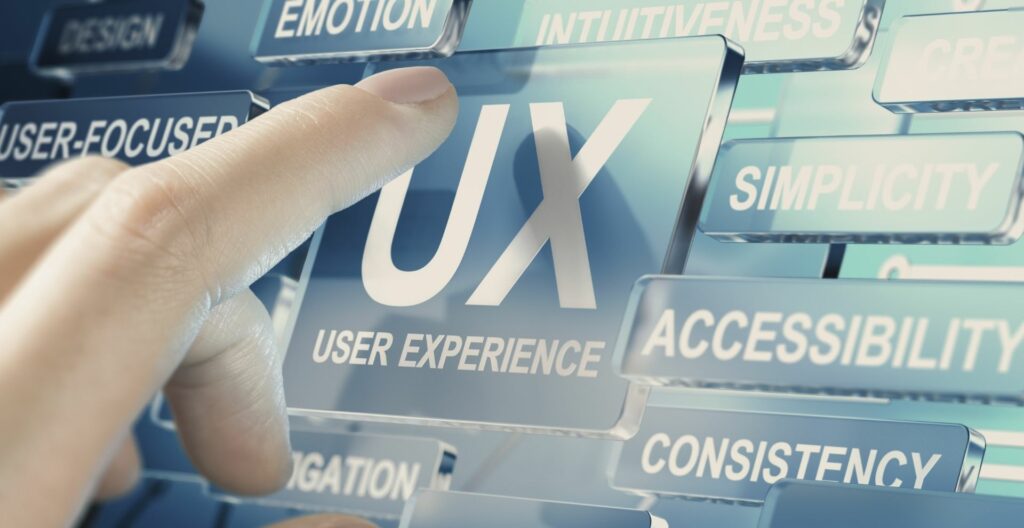Micro-interactions are small, often subtle interactions between a user and a website. These can be anything from a simple animation when a button is clicked to a notification that appears when a user performs a certain action. While they may seem minor, micro-interactions can greatly enhance a user’s experience on a website. In this blog post, we’ll explore the benefits of using micro-interactions in website design.
1- Increased User Retention
In addition to increasing engagement, micro-interactions can also help to improve user retention. By providing subtle feedback and confirmation to users as they interact with a website, users are more likely to feel a sense of accomplishment and satisfaction. This, in turn, can lead to users returning to the website in the future.
2- Improved Usability
Micro-interactions can also help to improve the usability of a website. For example, a notification that appears when a user submits a form can help to ensure that the user is aware that their submission was successful. This can help to reduce confusion and frustration, making it easier for users to navigate and interact with the website.
3- Enhanced User Experience
Perhaps the most significant benefit of using micro-interactions in website design is the enhancement of the user experience. By providing subtle feedback and confirmation to users as they interact with a website, users are more likely to feel that the website is intuitive and easy to use. This, in turn, can lead to a more positive overall experience, encouraging users to return to the website in the future.
4- Increased Brand Awareness
Finally, micro-interactions can also help to increase brand awareness. By incorporating unique and memorable micro-interactions into a website’s design, users are more likely to remember and associate those interactions with the brand. This can help to create a more memorable and distinctive brand image, ultimately leading to increased brand recognition and loyalty.
5- Improved User Engagement
Micro-interactions can be used to provide immediate feedback to users as they interact with a website. For example, when a user hovers over a menu item, a drop-down animation could appear, indicating that the item is clickable. When a user clicks on the item, a loading animation could be displayed to let the user know that the content is being loaded. These types of subtle interactions can help users feel more engaged with the website, encouraging them to explore and interact further.

6- Increased User Retention
Micro-interactions can also help to increase user retention by providing users with a sense of accomplishment and satisfaction. For example, when a user submits a form, a confirmation message could be displayed with a subtle animation, letting the user know that their submission was successful. This can make users feel more confident in their interactions with the website, increasing the likelihood that they will return in the future.
7- Improved Usability
Micro-interactions can also improve the usability of a website by providing clear feedback to users. For example, when a user types in a password, a visual indicator could appear to show the user the strength of their password. This can help users feel more confident in their interactions with the website, reducing confusion and frustration and making it easier for them to complete tasks.
8- Enhanced User Experience
Perhaps the most significant benefit of using micro-interactions in website design is the enhancement of the user experience. Micro-interactions can make a website feel more intuitive, responsive, and dynamic. For example, when a user clicks on a button, a subtle animation can make the button feel more responsive and interactive. When a user scrolls down a page, an animation can help guide their attention to the next section. These types of interactions can make a website feel more polished and professional, improving the overall user experience.
9- Increased Brand Awareness
Finally, micro-interactions can also help to increase brand awareness by providing users with memorable interactions that are associated with the brand. For example, a unique loading animation or confirmation message can help to create a distinctive brand image that users will remember. Over time, these small interactions can help to build brand recognition and loyalty, making it more likely that users will return to the website and recommend it to others.
Here are some examples of memorable micro interaction designs:
Facebook’s Like button
The Like button is a simple and intuitive way for users to express their appreciation for a post or comment. It’s a small interaction that has become an integral part of the Facebook experience.
Apple’s pull-to-refresh
This gesture allows users to refresh content by simply pulling down on the screen. It’s a natural and satisfying interaction that has been widely adopted by other apps and platforms.
Gmail’s undo sends
This feature gives users a few seconds to retract an email they’ve just sent. It’s a small but powerful interaction that can save users from embarrassing mistakes.
Tinder’s swipe gesture
Swiping left or right on a potential match is a fun and engaging way to quickly browse through profiles. It’s a simple interaction that has helped make Tinder one of the most popular dating apps.
Airbnb’s star rating system
The star rating system is a clear and effective way for users to rate their experiences with hosts and properties. It’s a small interaction that helps build trust and credibility within the Airbnb community.
In conclusion, micro-interactions are a powerful tool for improving the user experience of a website. By providing subtle feedback and confirmation to users as they interact with a website, micro-interactions can increase engagement and retention, improve usability, enhance the overall user experience, and even increase brand awareness. When designing a website, designers should consider how to incorporate micro-interactions in order to provide the best possible user experience.



